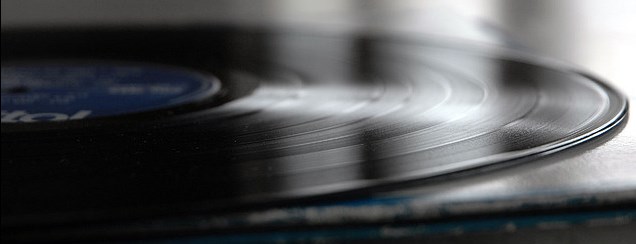A Modern Take on Learning to Play by Ear
Back in the old days, you learned how to play music in one of two ways: by reading
music notation or by learning by ear.
There were plenty of limitations - sheet music wasn't as accessible and learning
by ear (before the advent of recorded music) ment that you had to have a mentor
to apprentice under to learn how to play.
Fast forward to the 20th century and you had the rise of viny record players with
many musicians during the 60's and 70's learningto play along with their favourite
records. Unlike the cassette tape and CD formats that came later, vinyl record listeners
could slow down or speed up the tempo of the music by adjusting the turntable.

Slowing down the music was great for those tricky passages that you wanted to learn
and bass players would often speed up records in order to hear otherwise mired basslines
more clearly.
Unfortuately, slowing down and speeding music came with a pretty big trade off:
the pitch of the music was lowered or raised accordingly.
But technology has caught up with us.
The ability to raise or lower pitch and or tempo independently of each other has
been possible for a while now. We also have Google and Youtube allowing virtually
unlimited access to music from around the world on our computers and phones.
Many old school musicians have been at odds with technology, saying that the young
musicians today have it 'too easy'.
They complain that today kids can find any song on Youtube along with the written
lyrics and tablature within 10 seconds. They can watch performances and mimic their
idols easily, but (as some older musicians might say) at the cost of developing
their own style and learning how to play themselves without copying others.
But it doesn't have to be an all or nothing situation.
We can use technology to lessen the learning curve, but still allow learning to
take place.
We can go back to learning by ear, but with the advantages of altering the pitch
and tempo in a way that helps rather than hinders.
Pitch Switch will allow you to slow down those tricky passages and loop them until
you can play them effortlessly. You can alter the pitch to better suit your voice
or to make a song sound "heavier" by dropping it a semitone or two.
But all the time, you can be listening to the music.
- You can figure out how to make the sounds you hear.
- You can slow down the music until you have the feel and the timing down perfectly.
You can create clips of challenging music that you've always wanted to play and
slow them down with Pitch Switch. Then you can play them back to back until you
master them at that tempo. You can create a slightly faster version and practice
until you've mastered it as well.
Eventually you can be playing at full speed, and rather than being daunted and frustrated
by the learning process - you will have been rewarded along the way each time you've
mastered a certain tempo.
Pitch Switch is a piece of software that can help make you a better musician and
make the learning process more fun and rewarding at the same time.
How do you use Pitch Switch to become a better musician? How does Pitch Switch help
you with recording or performing music live?